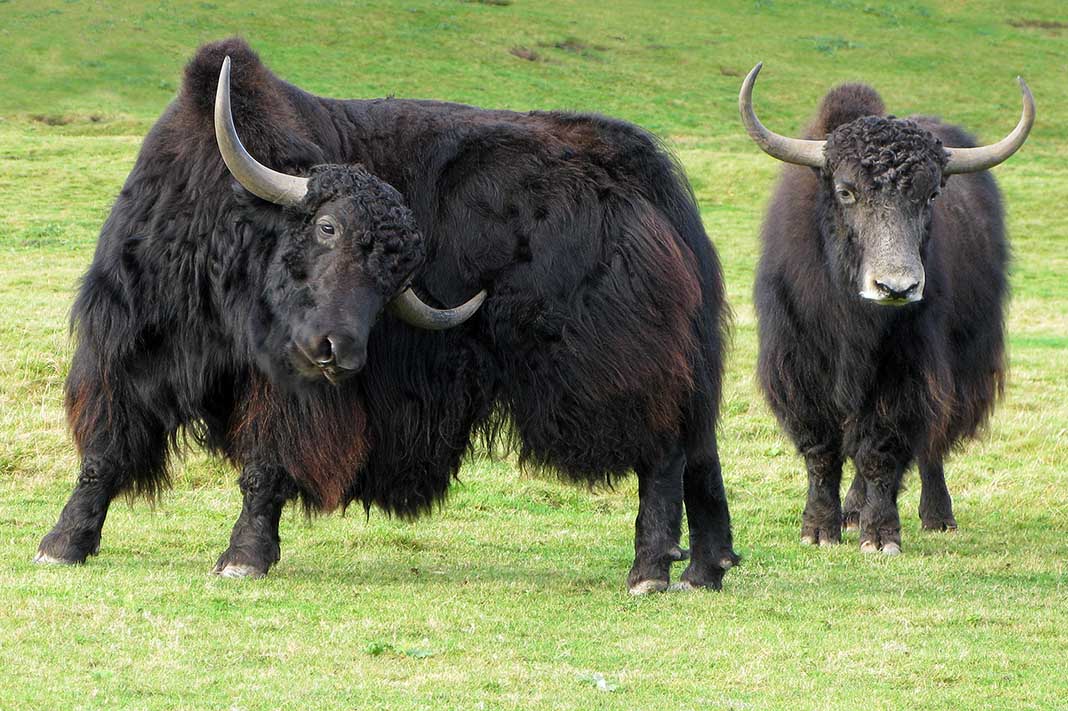Remember when the only alternative to cow’s milk was soy? It feels like a million years ago, considering we’re now spoiled for choice when it comes to non-dairy milk options. Which, of course, is great news for vegans and people who are lactose intolerant. But somewhere along the way, it seems we’ve forgotten that cows and nuts are far from the only sources of milk.

While 85% of the world’s milk supply comes from cows, there are plenty of areas where cattle can’t survive. So, these communities rely on other animals for their dairy supply. Some of these alternatives, like camel and goats milk, have started to emerge in health food stores in Australia and the US — thanks to their nutritional benefits and being easier to digest than cow’s milk.
Scroll through the gallery for 9 of the less common animal milks you should know about.
Camel’s Milk

Camel’s milk has been used as nutritional support for people living in harsh climates with scarce water for centuries. According to research, this is the closest you can get to a human mother’s milk in terms of immunity-boosting proteins. It also only contains A2 caseins (rather than inflammatory A1 casein protein) making it easier on the stomach than cow’s milk.
Goat’s Milk

A slightly more mainstream alternative, goat’s milk has seen a 60% increase in production in the last two decades due to an increased awareness of its nutritional value. “Like camel’s milk, goat’s milk typically has little to no inflammatory A1 casein proteins,” says Goop’s resident nutritionist Shira Lenchewski. It also doesn’t contain agglutinin proteins (lectins that cause fat globules in milk to cluster together) which makes it easier to digest.
A2 Cow’s Milk

If you’ve ever felt like certain cow’s milk brands make you feel sick while others don’t, you weren’t imagining it. There are two different types of cow’s milk — A1 and A2. Research shows that some people have a hard time digesting milks made with A1 casein, but not those with A2. So, if you want to drink cow’s milk and your stomach is a little on the sensitive side (but you’re not lactose intolerant) probably best to go for the less inflammatory A2 varieties.
Yak Milk

Unless you’ve been to Tibet (where 95% of yaks live) you’ve probably never tried this one. However, yak milk is popular in high-mountain areas where they’re sometimes the only dairy species available. It’s extremely nutritious, containing more protein and amino acids than cow, goat, or even human milk.
Buffalo Milk

You’ve probably had this one in the form of delicious buffalo mozzarella cheese. Accounting for 13% of the world’s dairy production, it’s the most common dairy animal in countries like India and Pakistan. It has more fat, protein, lactose, and minerals than cow’s milk and is known for its slightly nutty taste.
Horse Milk

Horse and donkey milk has long been consumed in Russia and Central Asia, due to its therapeutic benefits.“People drink donkey and horse milk for its hypoallergenic and therapeutic qualities,” says nutritionist Shira Lenchewski. “Horse milk has antacid properties; some use it to help treat chronic hepatitis, peptic ulcers, and tuberculosis.” In terms of composition, it’s very similar to human’s milk.
Reindeer Milk

Reindeer milk is a staple in northern Eurasia and the very cold taiga region where cows can’t survive. It has similar fat and calcium levels to cow’s milk, but with less sodium and potassium.
Sheep Milk

According to Young W. Park, Ph.D, editor of the Handbook of Milk of Non-Bovine Mammals, sheep milk is vastly superior to cow’s milk, thanks to its high solids content and high concentration of all 10 essential amino acids.
Cockroach Milk

Okay, so this one sounds impossible, not to mention rather disgusting. But while scientists haven’t yet discovered a way to mass produce milk from cockroaches, they’re working on it. Why? Well, when researchers in India analysed the crystal structure of cockroach milk (produced in the gut of the Diploptera Punctata cockroach) they discovered it’s four times more nutritious than cow’s milk— containing all of the essential amino acids plus high amounts of protein and fat. Yep, as much as we don’t want to believe it, cockroach milk could be the superfood of the future!


